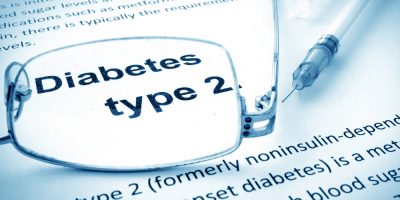- Home
- Editorial
- News
- Practice Guidelines
- Anesthesiology Guidelines
- Cancer Guidelines
- Cardiac Sciences Guidelines
- Critical Care Guidelines
- Dentistry Guidelines
- Dermatology Guidelines
- Diabetes and Endo Guidelines
- Diagnostics Guidelines
- ENT Guidelines
- Featured Practice Guidelines
- Gastroenterology Guidelines
- Geriatrics Guidelines
- Medicine Guidelines
- Nephrology Guidelines
- Neurosciences Guidelines
- Obs and Gynae Guidelines
- Ophthalmology Guidelines
- Orthopaedics Guidelines
- Paediatrics Guidelines
- Psychiatry Guidelines
- Pulmonology Guidelines
- Radiology Guidelines
- Surgery Guidelines
- Urology Guidelines
Diabetes medications linked to increased risk of amputation

Type 2 diabetes (T2D) patients treated with sodium-glucose cotransporter 2 (SGLT2) inhibitors have an increased risk of lower-limb amputation and diabetic ketoacidosis compared with glucagon-like peptide 1 (GLP1) receptor agonists, finds a new study published in The BMJ.
SGLT2 inhibitors are being increasingly used for the treatment of T2D. But some studies have raised concerns regarding its safety and have shown it to be associated with serious complications, including lower limb amputation, bone fracture, diabetic ketoacidosis, acute kidney injury, serious urinary tract infections, venous thromboembolism, and acute pancreatitis.
To better understand these, Peter Ueda, Karolinska University Hospital in Stockholm, and colleagues examined the association between the use of SGLT2 inhibitors and seven serious adverse events of current concern in a register-based cohort study.
Data were included for a propensity score-matched cohort of 17,213 new users of SGLT2 inhibitors and 17,213 new users of GLP1 receptor agonists.
Key Findings:
- Compared with GLP1 receptor agonists, use of SGLT2 inhibitors correlated with an increased risk for lower-limb amputation (incidence rate ratio, 2.7 versus 1.1 events per 1,000 person-years; hazard ratio [HR], 2.32; 95 percent confidence interval [CI], 1.37 to 3.91) and diabetic ketoacidosis (1.3 versus 0.6; HR, 2.14; 95 percent CI, 1.01 to 4.52).
- SGLT2 use was not associated with increased risks for bone fracture (15.4 versus 13.9; HR, 1.11; 95 percent CI, 0.93 to 1.33), acute kidney injury (2.3 versus 3.2; HR, 0.69; 95 percent CI, 0.45 to 1.05), serious urinary tract infection (5.4 versus 6.0; HR, 0.89; 95 percent CI, 0.67 to 1.19), venous thromboembolism (4.2 versus 4.1; HR, 0.99; 95 percent CI, 0.71 to 1.38), or acute pancreatitis (1.3 versus 1.2; HR, 1.16; 95 percent CI, 0.64 to 2.12).
"The findings should be interpreted in the context of limitations of observational studies and the uncertainty of the effect estimates," the authors write.
"In this analysis of nationwide registers from two countries, use of SGLT2 inhibitors, as compared with GLP1 receptor agonists, was associated with an increased risk of lower limb amputation and diabetic ketoacidosis, but not with other serious adverse events of current concern," they concluded.
For further reference follow the link: https://doi.org/10.1136/bmj.k4365

Disclaimer: This site is primarily intended for healthcare professionals. Any content/information on this website does not replace the advice of medical and/or health professionals and should not be construed as medical/diagnostic advice/endorsement or prescription. Use of this site is subject to our terms of use, privacy policy, advertisement policy. © 2020 Minerva Medical Treatment Pvt Ltd